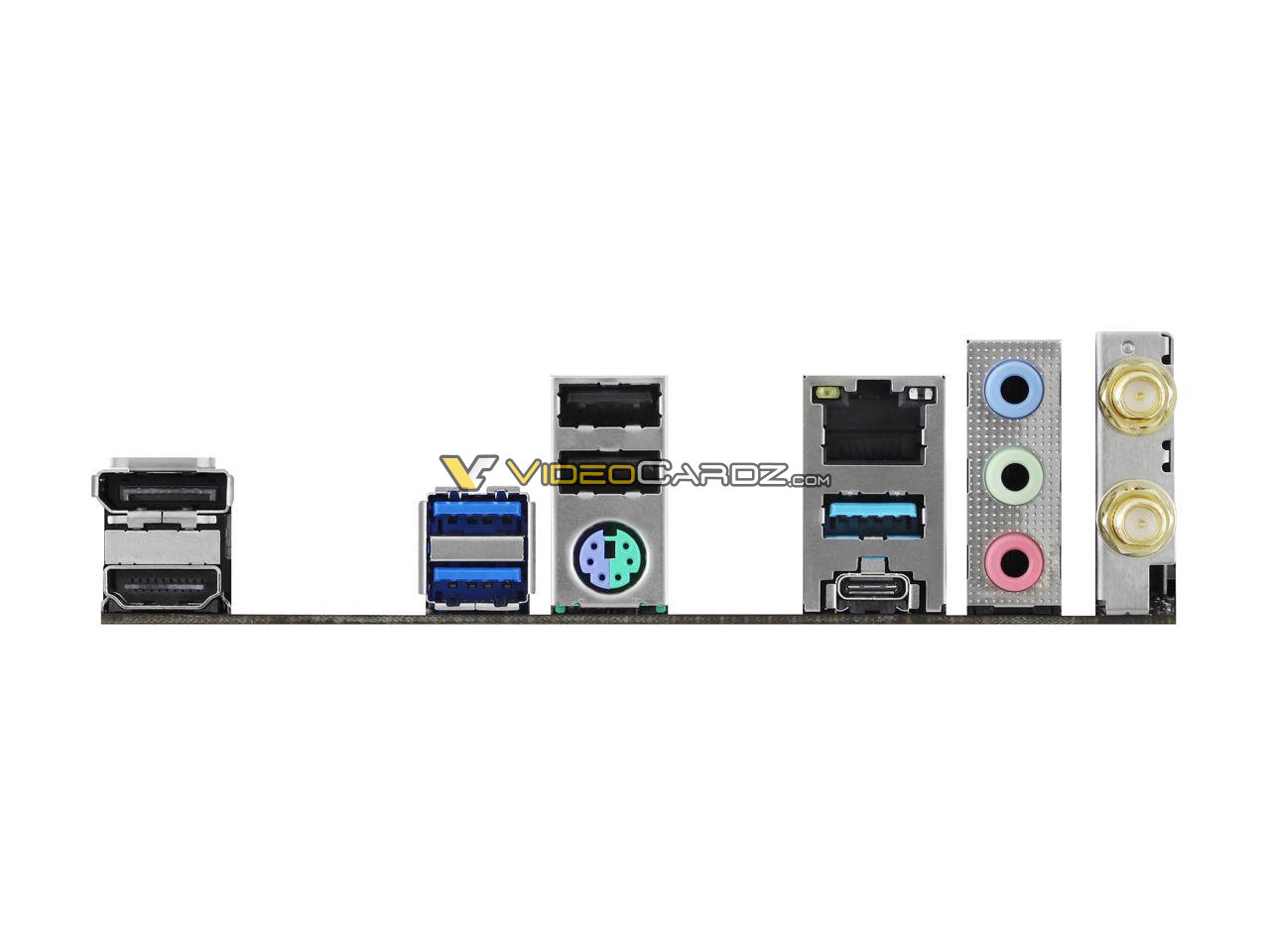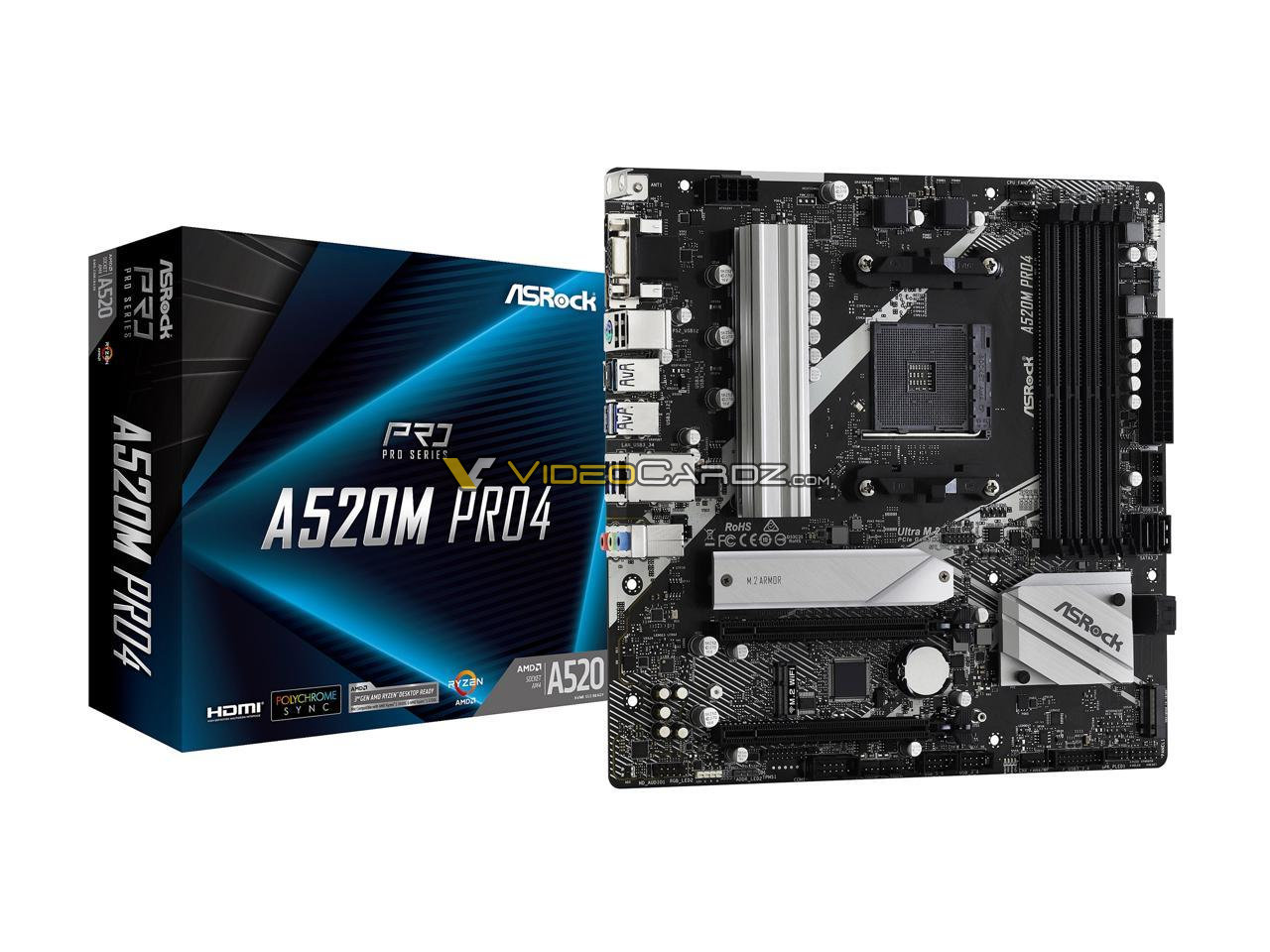ASRock A520 Motherboards Show Why A520 May Be a Better Option Than B550

Don't fret if the pricing for B550 motherboards is preventing you from upgrading. VideoCardz received information that ASRock is reportedly preparing up to five different A520 motherboards for budget seekers. According to the publication, A520 motherboards will launch later this month, which differs from DigiTimes' report of a September launch.
A520 is the entry-level chipset for AMD's 500-series, and being A-series, CPU overclocking is pretty much off the table. It's reasonable to expect A520 to arrive without PCIe 4.0 support, although AMD hasn't officially said otherwise.
VideoCardz revealed two motherboards from ASRock's upcoming A520 army. The A520M-ITX/ac comes in a mini-ITX form factor, while the A520M Pro4 has a larger microATX footprint.
ASRock A520M-ITX/ac


The A520M-ITX/ac's resemblance to the existing B550M-ITX/ac is uncanny. If it wasn't for the model name on the PCB, you could swear you're looking at the B550M-ITX/ac.
The A520M-ITX/ac appears to feature an eight-phase power delivery subsystem, a configuration that's commonly found on cheaper B550 motherboards. As expected of the mini-ITX form factor, the motherboard only has two DDR4 memory slots, but memory overclocking should be superb given the shorter traces to the processor.
The motherboard accommodates up to five storage devices. There are four SATA III connectors and a single M.2 slot up front. The A520M-ITX/ac only has one PCIe x16 slot so graphics card selection requires extra consideration.
Connectivity-wise, the A520M-ITX/ac is an identical copy of the B550M-ITX/ac. The rear panel reveals a DisplayPort and HDMI port for displays. Of course, you'll have to pair the motherboard with an AMD APU to use either output since the normal Ryzen chips don't come with an iGPU. An Ethernet port and wireless networking are also available for your usage.
Get Tom's Hardware's best news and in-depth reviews, straight to your inbox.
The rear panel holds two USB 2.0 ports, one USB 3.2 Gen 2 Type-A port, two USB 3.2 Gen 1 Type-A ports, one USB 3.2 Gen 1 Type-C port, one PS/2 combo port and three 3.5mm audio jacks.
The B550M-ITX/ac retails for $129.99, so we expect the A520M-ITX/ac's price tag to be a lot more friendly on the pockets.
ASRock A520M Pro4


The A520M Pro4 looks a little different to the B550M Pro4. For starters, the A520M Pro4 doesn't have a fancy white heatsink over the power delivery subsystem. The images don't uncover its design, however, the B550M Pro4 is equipped with an eight-phase configuration so we can expect the A520 variant to carry the same setup, if not less.
The A520M Pro4 puts four DDR4 memory slots at your disposal. We spot four SATA III ports in total, two less than the B550M Pro4. Nonetheless, the two M.2 slots remain untouched. Unlike the A520M-ITX/ac, the A520M Pro4 lacks wireless connectivity so you'll be connecting to the Internet through the standard Ethernet port unless you purchase a wireless card.
In terms of expansion, the A520M Pro4 supplies two PCIe x16 slots. It's only missing the PCIe x1 slot, which is present on the more expensive B550M Pro4.
Similar to the situation with the A520M-ITX/ac and B550M-ITX/ac, the A520M Pro4 has the exact same rear panel as the B550M Pro4. Display outputs consist of one D-sub port, one HDMI port and one DisplayPort output. The diverse mix of USB ports includes one USB 3.2 Gen 2 Type-A port, one USB 3.2 Gen 2 Type-C port, four USB 3.2 Gen 1 Type-A ports and two USB 2.0 ports. Lastly, the motherboard has three 3.5mm jacks for connecting audio devices.
The B550M Pro4 sells for $114.99, and the absence of a couple of the features on the A520M Pro4 should allow ASRock to price the motherboard more competitively.

Zhiye Liu is a news editor, memory reviewer, and SSD tester at Tom’s Hardware. Although he loves everything that’s hardware, he has a soft spot for CPUs, GPUs, and RAM.
-
tennis2 Dropping PCIe Gen4 will do that. I don't see this mentioned anywhere in your article.Reply
No OC support either? Don't know if this table is accurate:
I get the COVID supply stuff in the short term. But, in general, mobos are wayyyyy to expensive these days. -
logainofhades No overclocking isn't exactly a deal breaker. PBO does a good enough job, that overclocking Ryzen 3000 is a waste of time, anyway.Reply -
tlmiller76 So, given the B450 now will have support for 4000 series CPU's, if the A520 doesn't support PCIe 4.0, what exactly is the point of considering it over B450? The whole point of 500 series mobo's is PCIe 4.0 support, without that, I don't see a reason to consider this over a B450 board.Reply -
InvalidError Reply
The whole point of the 550/520 is guaranteed out-of-the-box support for 4000-series CPUs. With B450, you are limited to boards that explicitly state out-of-the-box support on the box or have BIOS flashback function for CPU-less BIOS update.tlmiller76 said:The whole point of 500 series mobo's is PCIe 4.0 support, without that, I don't see a reason to consider this over a B450 board.
Also, at least as far as B550 boards are concerned, the VRMs are WAY better on average: whereas B450 VRMs top out at four fat (double-FETs) Vcore phases, most B550 are kind of overkill for normal use at 8+ phases. -
watzupken Reply
This is true. Most of the Zen 2 chips runs best when we leave it to run at stock with PBO on. In my experience, performance actually regressed when I overclocked a Zen 2 chip.logainofhades said:No overclocking isn't exactly a deal breaker. PBO does a good enough job, that overclocking Ryzen 3000 is a waste of time, anyway. -
logainofhades Replytlmiller76 said:So, given the B450 now will have support for 4000 series CPU's, if the A520 doesn't support PCIe 4.0, what exactly is the point of considering it over B450? The whole point of 500 series mobo's is PCIe 4.0 support, without that, I don't see a reason to consider this over a B450 board.
Except for the MSI max boards, 500 series boards have larger rom, for bios storage. This will allow for more cpu support, while keeping the bios interface UI as we have become used to. Older chipsets have a 16mb rom, while the newer ones have 32mb, like the Max series boards. 500 series boards have shown to be better VRM wise, compared to their 400 counterparts, as well. -
Exia00 ReplySnipergod87 said:A series never had overclocking
If it never had overclocking how would you explain this then pqx2cydjOjAView: https://youtu.be/pqx2cydjOjA
and besides all AM4 boards has PBO on them which a popular YouTuber tested the Ryzen 5 3600 with a A320 board with PBO on and he was getting pretty much the same performance as someone that would be using a B450/X470/X570 board.